#Paul Citroën
Explore tagged Tumblr posts
Text

Paul Citroën, Metropolis, 1923
576 notes
·
View notes
Text









"Beside me, the thing I have helped kill, rolls her eyes, sighing."
Eugene Roe & Merriell Shelton
for @guarnerepdf
(Anna Akhmatova, Modest Mouse, Paul Citroën, William Faulkner, Kathy Acker)
#moodboard posting!!!!! or whatever web weaving posting!!!!!!!#not me doing these for the whole shelton clan............when inspiration strikes etc#web weaving#eugene roe#merriell shelton#theyre soulmates theyre brothers theyre father and son theyre enemies they are best friends
20 notes
·
View notes
Text
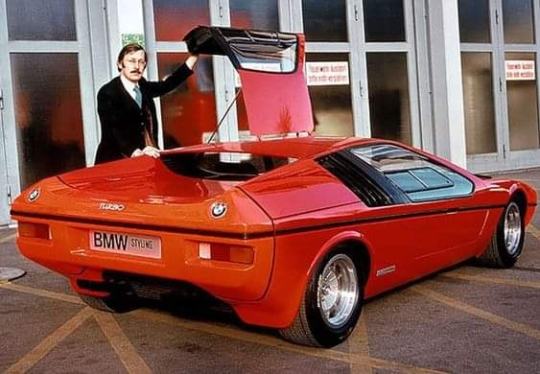
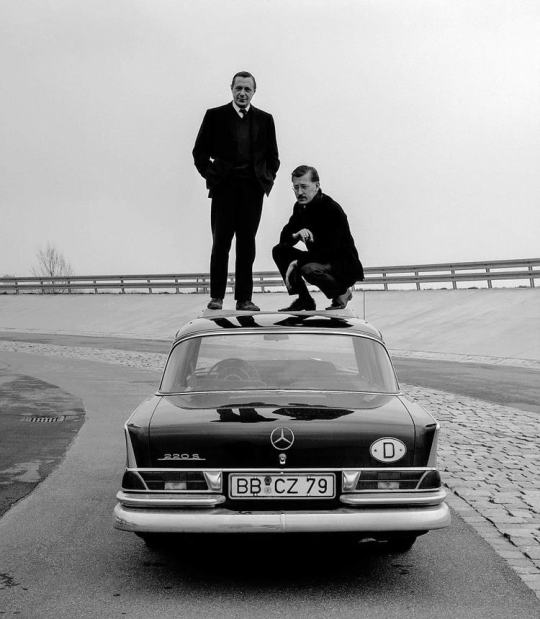
Paul Bracq est un designer automobile célèbre pour son travail chez Mercedes, BMW, Citroën et Peugeot. Il a stylisé la Mercedes 600, 230SL Pagode et le cabriolet BMW. - source Cars & Motorbikes Stars of the Golden era.
47 notes
·
View notes
Text
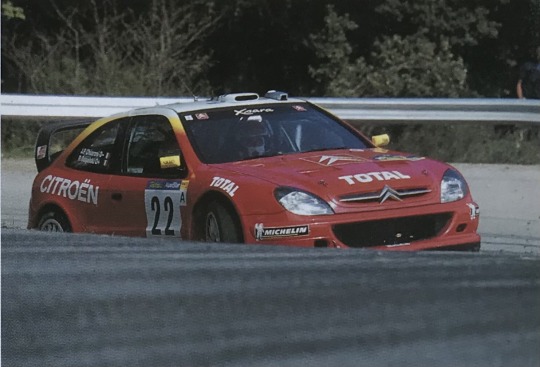
Philippe Bugalski🇫🇷Jean Paul Chiaroni 🇫🇷#22:Citröen Xsara WRC .Automobile Citroën.3ème classement final.Rally de Catalunya Costa Brava Rally de España🇪🇸2002
15 notes
·
View notes
Photo

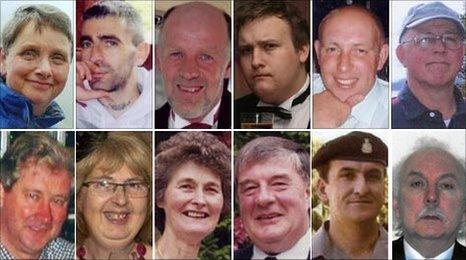
Cumbria Shootings
In the early hours of Wednesday, 2 June 2010, Derrick Bird left his home in Rowrah, Cumbria, drove his Citroën Xsara Picasso to his twin brother David's home in Lamplugh, and shot him eleven times in the head and body with a .22 calibre rifle, killing him. Bird then drove to Frizington, arriving at the home of his family's solicitor, Kevin Commons. Bird prevented Commons from driving away by firing twice with a double-barrelled shotgun – which he had earlier sawn off (the barrel and a saw being later found at his home) hitting him once in the shoulder. Commons staggered out of his car and onto the entrance to his farmyard, where Bird killed him with two rifle shots to the head. Bird then moved on towards Whitehaven. A witness called the Cumbria Constabulary to report the Commons shooting, although her call was delayed by several minutes after she asked neighbours what she should do. She also erroneously described Bird as being armed with an air rifle despite being able to hear the gunshots.
After killing Commons, Bird went to a friend's residence to retrieve a shotgun he had loaned, although he was answered by the friend's wife, who didn't have access to it. Afterwards, at 10:33, Bird drove to a taxi rank on Duke Street, Whitehaven. There, he called over Darren Rewcastle, another taxi driver who was previously known to Bird; Bird had conflicts with Rewcastle over his behaviour, his practice of poaching fares, and an incident wherein Rewcastle damaged the tyres on Bird's taxi and openly boasted about it. When Rewcastle approached Bird's taxi, he was shot twice at point-blank range with the rifle, hitting him in the lower face, chest, and abdomen. Rewcastle died of his injuries, becoming the only person to die in Whitehaven during the attacks.
Soon after killing Rewcastle, Bird drove alongside another taxi driver, Donald Reid, and shot him in the back, wounding him. Bird then made a loop back to the taxi rank and fired twice at Reid as he waited for emergency personnel, missing him. Next, Bird drove away from the taxi rank and stopped alongside another taxi driver named Paul Wilson as he walked down Scotch Street, and called him over to his vehicle as he did with Rewcastle; when Wilson answered his call, Bird shot him in the right side of his face with the sawn-off shotgun, severely wounding him. As a result of the shootings, unarmed officers at the local police station were informed and began following Bird's taxi as it drove onto Coach Road. There, Bird fired his shotgun at a passing taxi, injuring the male driver, Terry Kennedy, and the female passenger, Emma Percival. Bird was then able to flee the officers after he aimed his shotgun at two of them, forcing them to take cover. However, he did not fire; he instead took advantage of the officers' distraction to escape.
A massive manhunt for Bird was launched by the Cumbria Constabulary, which was assisted by Civil Nuclear Constabulary officers. Bird proceeded to drive through several local towns, firing apparently at random, and calling a majority of the victims over to his taxi before shooting them. Near Egremont, Bird tried to shoot Jacqueline Williamson as she walked her dog, but she managed to escape without injury. Upon arriving in Egremont, he stopped alongside Susan Hughes as she walked home from shopping, and shot her in the chest and abdomen with the shotgun. He then got out of his taxi and got into a struggle with Hughes before fatally shooting her in the back of the head with his rifle. Then, after driving a short distance to Bridge End, Bird fired the shotgun at Kenneth Fishburn as he walked in the opposite direction; Fishburn suffered fatal wounds to the head and chest.
This was followed by the shooting of Leslie Hunter, who was called over to Bird's taxi before being shot in the face at close range with the shotgun, then a second time in the back after he turned away to protect himself. Hunter survived his injuries. Bird then went south towards Thornhill, where he fired his shotgun at Ashley Glaister, a teenage girl; however, he missed her. He then passed Carleton and travelled on to the village of Wilton. There, he tried to visit Jason Carey, a member of a diving club Bird also belonged to, but Bird left when Carey's wife came to the door. Soon afterward, Bird shot Jennifer Jackson once in the chest with his shotgun and twice in the head with his rifle, killing her.
Bird then drove past Town Head Farm, but turned back towards it and fired his shotgun, fatally hitting Jackson's husband James in the head and wounding a woman named Christine Hunter-Hall in the back. He then drove back to Carleton and killed Isaac Dixon, a mole-catcher, who was fatally shot twice at close range as he was talking to a farmer in a field. A former semi-professional rugby player, Garry Purdham, was soon shot and killed while working in a field outside the Red Admiral Hotel at Boonwood, near Gosforth.
Bird then drove towards Seascale. Along the way, he began driving slowly and waved other motorists to pass him. He shot a motorist named James "Jamie" Clark, who suffered a fatal wound to the head, although it was not clear at first whether he died from the gunshot or the subsequent car crash. Bird then encountered another motorist named Harry Berger at a narrow, one-way passage underneath a railway bridge. When Berger allowed Bird to enter first, Bird fired at him as he passed by, shooting him twice and causing severe injury to his right arm. Three armed response vehicles attempting to pursue Bird were later blocked out of the tunnel by Berger's vehicle; it had to be pushed away to let them pass. Meanwhile, Bird had driven on to Drigg Road, where he fired twice at Michael Pike, a retired man who was cycling in front of him; the first shot missed, but the second hit Pike in the head and killed him. Seconds later, while on the same street, Bird fatally shot Jane Robinson in the neck and head at point-blank range after apparently calling her over.
After the killing of Robinson, who was the final fatality in the shootings, witnesses described Bird as driving increasingly erratically down the street. At 11:33, Police Constables Phillip Lewis and Andrew Laverack spotted Bird as his car passed by their vehicle. They attempted to pursue him, but were delayed in roadworks and lost sight of him a minute later. Soon afterward Bird drove into Eskdale valley, where he wounded Jackie Lewis in the neck with his rifle as she was out walking. At this point, his route had become clearer to police during their search for him. Next, Bird stopped alongside Fiona Moretta, who leaned into his passenger window, believing he was going to ask her for directions. Instead, he injured her in the chest with the rifle, then continued onward towards the village of Boot.
Arriving in Boot, Bird briefly stopped at a business premises called Sim's Travel and fired his rifle at nearby people, but missed. Continuing further into the village, he continued firing at random people and missing. Bird eventually fired his rifle at two men, hitting and severely wounding Nathan Jones in the face. This was shortly followed by a couple who had stopped their car to take a photo; Samantha Chrystie suffered severe wounds to the face from a rifle bullet. Chrystie's partner, Craig Ross, fled upon Bird's instruction and was then fired at, but escaped uninjured.
Shortly after firing at two cyclists, Bird crashed his taxi into several vehicles and a stone wall, damaging a tyre. Briefly continuing onward, he abandoned his car at a beauty spot near Boot, named Doctor Bridge, when the damaged tyre deflated. A nearby family of four, who were unaware of the shootings, offered assistance to Bird, but were quickly turned down and advised to leave. Bird removed the rifle from his taxi and walked over a bridge leading into Oak How Woods. He was last seen alive at 12:30; shortly afterward, police confirmed that there had been fatalities and that they were searching for a suspect. Police later announced they were searching for the driver of a dark-grey Citroën Xsara Picasso driven by the suspect, who was identified as Bird.
At around 12:36, armed police officers and dog handlers arrived at the scene of Bird's abandoned taxi and began a search in and around the wooded area. At 14:00, Deputy Chief Constable Stuart Hyde announced that Bird's body had been found in a wooded area, along with a rifle.
20 notes
·
View notes
Text
youtube
GSX-R1100 swapped, mid-engined Citroën 2CV driving around circuit Paul Ricard and playing with a Ferrari 458. Pics below:
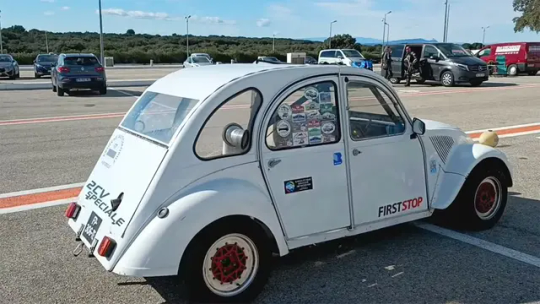

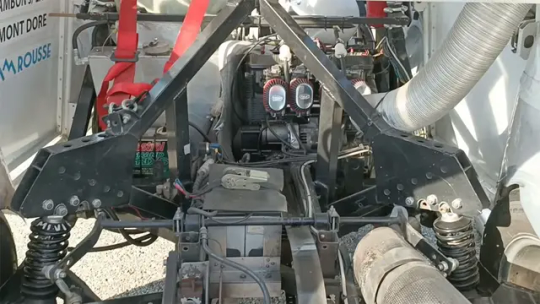
Owner's youtube channel
4 notes
·
View notes
Text
Very special: 1959 PMS Panhard
Finding very special cars for sale has always been our aim, and this little racing car fully satisfies that requirement, not least because it looks like a barn find. The builder of this car was Paul Meniessier, a Citroën agent and a pilot in the South of France. Ménissier designed and built this PMS-Panhard (PMS is for Paul Menissier Special), with a strange idea in his mind : the mid-engine…
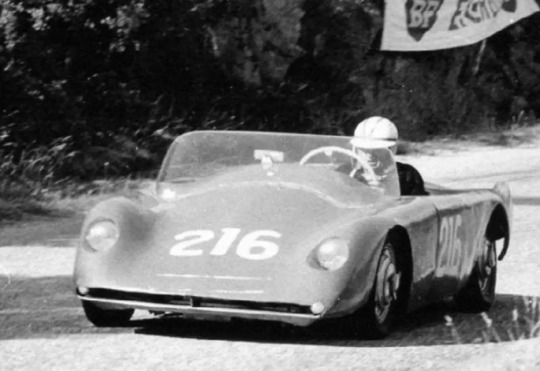
View On WordPress
3 notes
·
View notes
Text
The City as a Collage
Human settlements are cultural, economic, political, social and many other narratives that are written in the territory. This implies a diversity of narratives, depending on origins, traditions, heritage, etc. In a world as interconnected as the one we live in, it is natural then that, as cities are condensers of people, they also become a condenser of narratives and end up forming a collage.
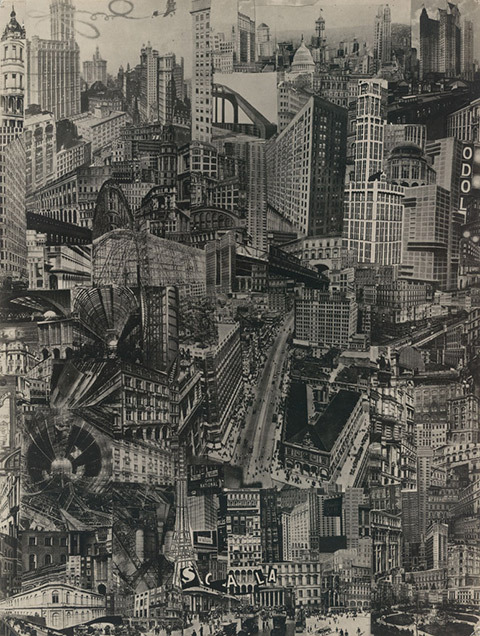
Paul Citroen. Metropolis, 1923. Gelatin silver print, 8 1/16x6'' (20.4x15.3cm). Thomas Walther Collection. Gift of Thomas Walther. @2013 Paul Citroën/Artists Rights Society (ARS), New York/PICTORIGHT, Amsterdam
1 note
·
View note
Text
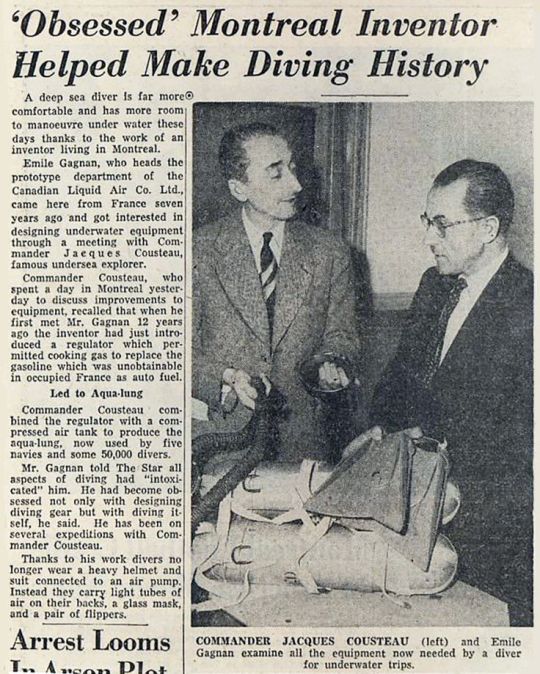
Si la plongée est évidemment née des découvertes médicales, des progrès technologiques et des prises de risques qui ont été le fait d’individus ou d’équipes réduites, elle doit autant à Blum qu’à Cousteau, à André Citroën qu’à Paul Bert, à Gilbert Trigano qu’à Valsalva, à Luc Besson qu’à la Fédération française d’études et de sports sous-marins.
Le milieu sous-marin a toujours exercé sur l’homme une vive attraction en raison de son mystère, de la beauté et de la richesse de sa flore et de sa faune et des trésors qu’il recèle.
A peine a-t-on pratiqué ce moyen de découvrir un monde qui échappe à la majorité que l’on est adopté par une secte, une religion, on est « initié » à des pratiques ésotériques, mystérieuses pour les terriens ou pour ceux du « monde du dessus. C’est merveilleux d’en faire partie, d’être dans le secret des dieux sous-marins que peu connaissent encore.
Histoire de la plongée sous Marine en France.(1865-1985).
0 notes
Text
Tour of Italy har afsluttet konkurrencens femte etape
Denne måned handler udelukkende om Tour of Italy, og mange køreres præstationer i løbet har tiltrukket sig opmærksomhed. Hver etape vil byde de fans velkommen, der ser kampen, og de nyder også spillets udseende og følelse. Konkurrencen om den femte etape af Tour of Italy er slut, og Aurelien Paret-Peintre, iført AG2R La Mondiale Cykeltrøje, vandt etapemesterskabet.
Etape 5 var et stort tab for AG2R Citroën Team, hvor Paul Lapeira meldte sig ud af løbet. Paul Lapeira meldte sig ud i dag efter at have misset den blå Billigt Cykeltøj på fjerde etape. Selvom nogle kørere fra AG2R Citroën Team annoncerede deres tidlige tilbagetrækning fra løbet, var andre holdkammerater stadig nødt til at fortsætte løbet. Hele løbet har oplevet tre klatreløb på andet niveau, og det samlede løb er en udfordring for deltagerne. Og der er også en downhill-sektion med kurver, som også er en test af konkurrenternes downhill-evner. Så længe en kører laver en fejl under løbet, vil de sandsynligvis lide et styrt og blive skadet under løbet. Hvad kørerne ikke kan undgå under løbet er regnvejret, de er vant til de ustabile vejrproblemer i løbet.
I løbet dannede 7 kørere den første breakout-gruppe, og de åbnede op for distancen og tiden fra hovedgruppen. Andreas Leknessund og Aurelien Paret-Peintre tog føringen i det kritiske øjeblik før løbets afslutning. De to konkurrerede om etapemesterskabet i dette løb. På de sidste 150 meter slog Aurelien Paret-Peintre ind. Han overgik Andreas Leknessund for at vinde mesterskabet på femte etape i Tour of Italy. Andreas Leknessund fra Andreas Leknessund blev nummer to på etapen og Toms Skujins fra Trek-Segafredo blev nummer tre på etapen.
0 notes
Text
Le Tour d'Italie a conclu la cinquième étape de la compétition
Ce mois-ci est consacré au Tour d'Italie et les performances de nombreux pilotes en course ont attiré l'attention. Chaque étape accueillera les fans qui regardent le match, et ils apprécient également l'apparence et la convivialité du jeu. La compétition de la cinquième étape du Tour d'Italie est terminée et Aurélien Paret-Peintre, portant le Maillot Cyclisme AG2R La Mondiale, remporte le championnat de l'étape.
L'étape 5 a été une grosse perte pour l'équipe AG2R Citroën, Paul Lapeira s'étant retiré de la course. Paul Lapeira s'est retiré aujourd'hui après avoir raté le Maillot Cyclisme bleu lors de la quatrième étape. Si certains pilotes du Team AG2R Citroën annoncent leur abandon anticipé de la course, d'autres coéquipiers doivent encore continuer la course. L'ensemble de la course a connu trois courses d'escalade de deuxième niveau, et la course totale est un défi pour les participants. Et il y a aussi une section de descente avec des courbes, qui est aussi un test des compétences en descente des concurrents. Tant qu'un pilote fait une erreur pendant la course, il est susceptible de subir un accident et d'être blessé pendant la course. Ce que les pilotes ne peuvent pas éviter pendant la course, c'est le temps pluvieux, ils sont habitués aux problèmes météo instables de la course.
Dans la course, 7 pilotes ont formé le premier groupe de discussion, et ils ont ouvert la distance et le temps du groupe principal. Andreas Leknessund et Aurélien Paret-Peintre ont pris la tête au moment critique avant la fin de la course. Les deux d'entre eux étaient en compétition pour le championnat d'étape de cette course. Dans les 150 derniers mètres, Aurélien Paret-Peintre a marqué les esprits. Il a dépassé Andreas Leknessund pour remporter le championnat de la cinquième étape du Tour d'Italie. Andreas Leknessund d'Andreas Leknessund a terminé deuxième de l'étape et Toms Skujins de Trek-Segafredo a pris la troisième place de l'étape.
0 notes
Text
Citroën DS
The Citroën DS is a front mid-engined, front-wheel drive executive car manufactured and marketed by Citroën from 1955 to 1975, in fastback/sedan, wagon/estate, and convertible body configurations, across three series of one generation.
Assembly: France: Paris (Vaugirard)
Citroën DS 21: French prestige
PAUL CLÉMENT-COLLIN - 4 août 2022
The Citroën DS is a myth, that's obvious (see also: Citroën DS) but despite its innovations and revolutionary looks, it retained an engine directly derived from the famous Traction at its launch. The DS 19 certainly allowed the General to get out of a bad situation at Petit-Clamart, but it lacked a bit of mechanical nobility, and above all power in order to compete with other European saloons. With the DS 21, Citroën responded to the criticism and finally offered an engine (although still derived from the same block) that would make it possible to exploit the car's true qualities, and in particular its famous handling.

Two DS and Traction Avant at Paris

On Citroën DS: Général Charles de Gaulle visits Isles-sur-Suippe (Marne) in 1963-

Citroen DS 21 Cabriolet at Chalon sur Saone (City in France)
Marketed with a less expensive variant, the Citroën ID, the DS was known for its aerodynamic, futuristic body design; unorthodox, quirky, and innovative technology, and it set new standards in ride quality, handling, and braking, thanks to both being the first mass production car equipped with hydropneumatic suspension, as well as disc brakes. The 1967 series 3 also introduced directional headlights to a mass-produced car
The name DS and ID are puns in the French language. "DS" is pronounced exactly like déesse, lit. 'goddess', whereas "ID" is pronounced as idée ('idea').
Effect on Citroën brand development
The 1955 DS cemented the Citroën brand name as an automotive innovator, building on the success of the Traction Avant, which had been the world's first mass-produced unitary body front-wheel-drive car in 1934. In fact, the DS caused such a huge sensation that Citroën was apprehensive that future models would not be of the same bold standard. No clean sheet new models were introduced from 1955 to 1970.
Citroën DS 21: French prestige (carjager.com)
Citroën DS - Wikipedia

Citroën DS 21 Cabriolet 1972 à Paris, France . - source Cars & Motorbikes Stars of the Golden era.
164 notes
·
View notes
Text
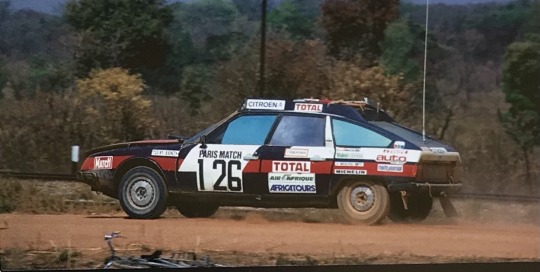
Jean Paul Luc 🇫🇷Philippe Alessandrini 🇫🇷#126.Citroën CX 2400 GTI :16ème classement final (2ème 2 RM).Paris Dakar 1981
6 notes
·
View notes


